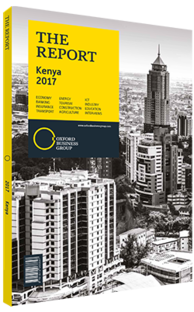Kenya sees more domestic tourism from a growing middle class
After suffering a downturn in international arrivals between 2011 and 2015, Kenya’s Ministry of Tourism (MoT) is looking at alternatives to bolster tourism revenues, with new marketing campaigns targeting domestic tourists in a bid to raise their share of total occupied hotel nights to half of the total in 2017. Efforts to promote affordable alternatives to five-star resorts, in addition to marketing national parks as wedding and honeymoon destinations, have already paid off: the country exceeded its domestic tourism target in 2015, although this is partly attributable to a broader decline in hotel occupancy and arrivals.
Domestic Targets
In January 2016 the Kenya Tourism Board (KTB) announced it expected the country’s base of domestic tourists to rise by 3% in 2017, projecting that Kenyans’ share of total nights spent was forecast to rise from 47% in 2014 to hit 50%.According to Jacinta Nzioka Mbithi, the KTB’s director of marketing, Kenya’s domestic tourism base holds significant potential for future expansion, after years of declining international arrivals driven by security concerns. In its 2016 “Economic Survey”, the Kenya National Bureau of Statistics (KNBS) reported that Kenyan residents have grown to account for a significant portion of total hotel nights in the country, with numbers increasing from 2.6m nights in 2011 to reach 2.95m in 2014.
Marketing
As part of its efforts to encourage domestic tourism, the MoT launched a $300,000 SMS campaign aimed at drawing in new domestic travellers — part of the sector’s recovery strategy, which the government began developing in 2014.
The eight-week campaign, which kicked off in January 2016, offered prizes, including two- and three-night vacation packages to destinations such as Kibo Safari Camp, Amboseli National Park, the Maasai Mara Game Reserve and the Samburu National Reserve. KTB has been active in developing new marketing campaigns for the domestic tourism industry, launching the #TembeaKenya and #MagicalKenya hashtags to encourage Kenyans to explore their own country, with a special emphasis on national parks in the Maasai Mara, Mount Kenya, Ambroseli and Tsavo areas.
The country will need to navigate some significant challenges if it is to fully realise its true domestic tourism potential; for instance, by addressing the burden posed by the relatively high cost of traditional safari holidays in the country. In January 2016 local press reported that three-star accommodation in Maasai Mara costs roughly KSh12,000 ($117) per person per night during the high season, while a five-star hotel would cost as much as KSh25,500 ($249) per person per night.
Although Kenya’s burgeoning middle class has driven retail and industrial growth in recent years with the KNBS reporting that formal employment in the country rose by 5.2% to hit 2.6m, including 2.5m salaried employees in 2015, while real average earnings rose by 2.1% to reach KSh368,980 ($3600) in 2015, middle-class purchasing power remains limited compared to Western markets. In the UK, for example, World Bank data shows that GDP per capita based on purchasing power parity stood at $41,801 in 2015, compared to $3088 in Kenya. According to the African Development Bank’s parameters, a member of the middle class in Kenya spends between $2 and $20 per day.
Exceeding Targets
Despite the fact that Kenyans have smaller holiday budgets than their western counterparts, the popularity of national parks and beach resorts is on the rise, particularly for honeymoons and weddings. Additionally, local media reports that national parks in the Lake Naivasha area, as well as Murang’a and Laikipia counties have become a hotspot for domestic tourism due to a growing portfolio of low-cost campsites on offer.
You have reached the limit of premium articles you can view for free.
Choose from the options below to purchase print or digital editions of our Reports. You can also purchase a website subscription giving you unlimited access to all of our Reports online for 12 months.
If you have already purchased this Report or have a website subscription, please login to continue.

